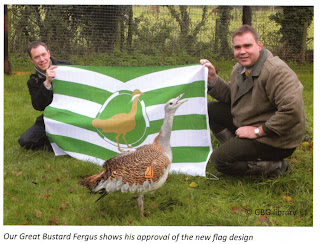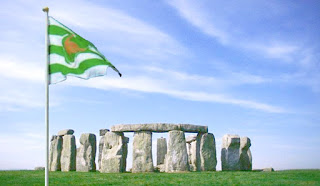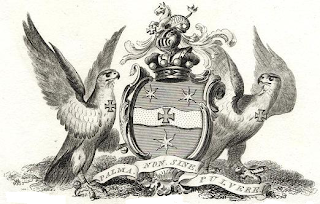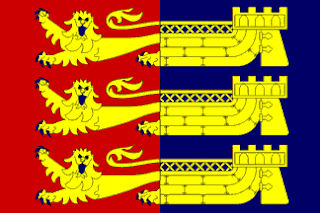 We were all excited to hear from the sixth speaker: a Member of Parliament, Andrew Rosindell who represents Romford which is on the North Eastern edge of Greater London.
We were all excited to hear from the sixth speaker: a Member of Parliament, Andrew Rosindell who represents Romford which is on the North Eastern edge of Greater London.MP Rosindell is serving his second term as an MP running with the conservative party. In parliament he founded the All Party Parliamentary Flag Group. This group's stated manifesto is to "promote the flying of the Union Flag and all flags associated with the UK and British Territories, and related matters."
I was excited to meet my first Tory and a member of parliament at that. Rosindell's presentation was entitled Ongoing Flag Campaigns.

Because I had lived in Japan for three years as an English Teacher, I rubbed a lot of elbows with teachers from the UK. The majority, actually all, that I meet were often liberal minded let's touch the world and be vegetarian people. Additionally the Aussies, Kiwis, Americans, and Canadians loved to wave their flag and wear it on their clothing. However I never ran into a Brit in Japan who had such a desire.

Apparently the people of Scotland and Wales fly their flag with pride and abundance when compared to England or the Union Flag. One of Rosindell's primary 'Flag Campaigns' is to get a Union Flag flying in all schools across England. I agree with Rosindell especially for public schools that receive benefit from the federal government.
There was som
 ething of a struggle to get the UK Union flag to fly permanently over Parliament. Rosindell informed me after his lecture, until quite recently the Union Flag was flown over Parliament only when it was in session.
ething of a struggle to get the UK Union flag to fly permanently over Parliament. Rosindell informed me after his lecture, until quite recently the Union Flag was flown over Parliament only when it was in session.Today they always fly the Union Flag over Parliament, but it has lost it's communicative purpose: to denote that the lawmakers are in session.
 Since the UK flag always flies over Parliament here is a proposal for a 'Parliament is in Session Flag'. The charge on the fly is Coat of Arms of Simon De Montfort who called for the first elected Parliament in 1265 AD. Behind the arms, is a knights of the round table based upon the design at Winchester, that had 25 slots for 24 knights and one for the Lord or Sovereign.
Since the UK flag always flies over Parliament here is a proposal for a 'Parliament is in Session Flag'. The charge on the fly is Coat of Arms of Simon De Montfort who called for the first elected Parliament in 1265 AD. Behind the arms, is a knights of the round table based upon the design at Winchester, that had 25 slots for 24 knights and one for the Lord or Sovereign.You Can Visit MP Andrew Rosindells Official Site Here


















